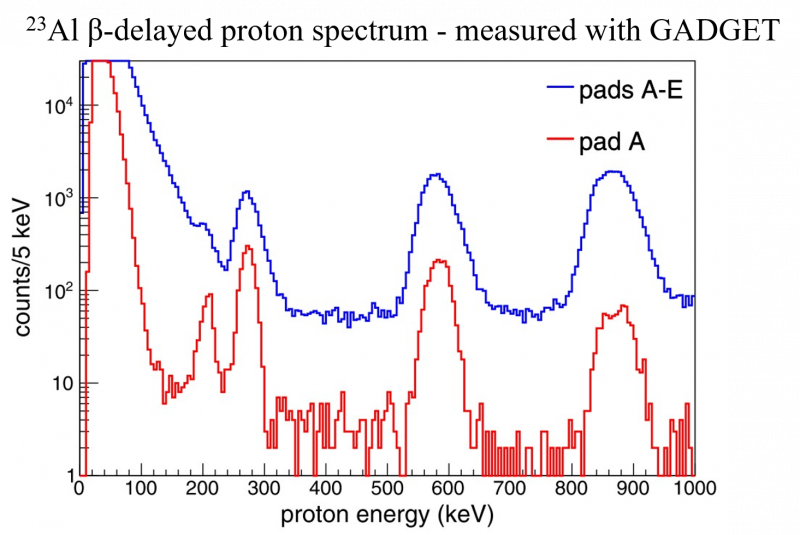β-delayed charged-particle emission
When a white dwarf or a neutron star accretes hydrogen-rich material from an accompanying main-sequence star, the temperatures on the surface of the compact object may reach the threshold for ignition of a thermonuclear explosion. Those magnificent explosions are seen on earth as classical novae (nova = new, as new star was born) or x-ray bursts. The thermonuclear explosions are sequences of nuclear reactions, many of which are proton or alpha capture on short-lived, proton-rich isotopes. Direct measurement of those reactions at the relevant temperatures are often not feasible, and alternative approach is needed to experimentally constraint the reaction rate.

One approach is to measure the nuclear properties of the relevant resonances of the resulting nucleus, specifically, the partial width for proton decay of the relevant excited states. This can be done by measurement of the proton-decay (or alpha-decay) branching ratio and the lifetime of the state. We use beta-decay to populate relevant excited states and measure their proton-decay branching ratio, and exchange reactions to measure lifetimes using the Doppler Shift Attenuation Method. Our group is collaborating with the group of Chris Wrede from FRIB on the development of dedicated experimental tools and the measurement of several such reactions. So far, we have measured the proton-decay branching ratios of the 7787-keV state of 23Mg and 6390-keV state of 30P, and made first measurement of 31S states’ lifetime. More experiments are planned to run at FRIB and TRIUMF.
The GAseous Detector with Germanium Tagging (GADGET)
GADGET is a detection assembly consist of the Proton Detector and the Segmented Gamma Array (SeGA). The Proton Detector is a gas-filled detector that allows high efficiency detection of low-energy protons with low intensity, and low β detection efficiency. The Proton Detector fits into the SeGA array for simultanious measurement of the emitted γ-rays. This provides a more detailed decay scheme information and also used for diagnositcs and normalization. GADGET-I proved very succseful in measuring low proton branching ratio (down to ~10-4) at low energies (down to 200 keV).

The Proton Detector is now going through an upgarde to become a Time Projection Chamber. GADGET-II will provide a 3D image of the decay, which will allow the measurement of the important 20Mg(βpα)15O decay sequence.

